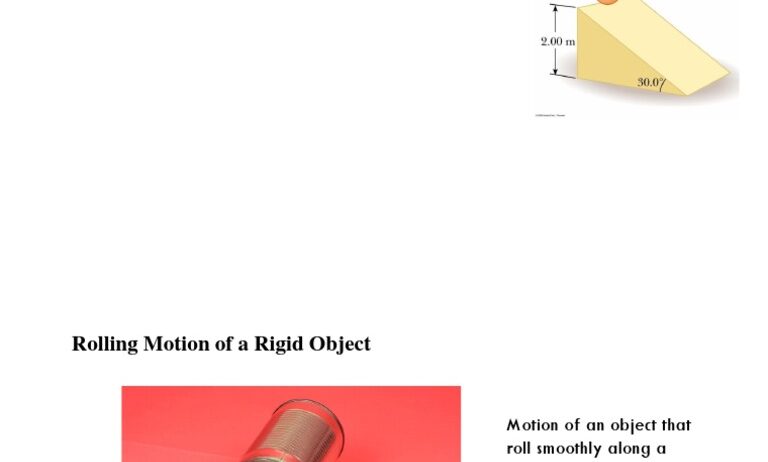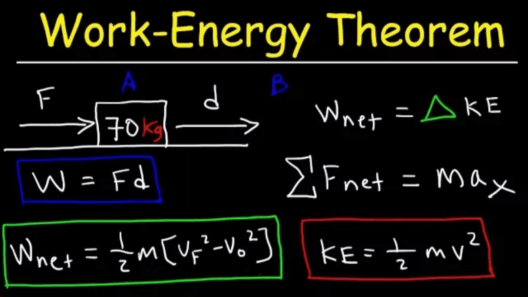In the study of physics, the concept of energy conservation is paramount. This principle asserts that the total energy in a closed system remains constant over time, despite the transformations that energy undergoes. One interesting aspect of this principle is the role of rotational energy, especially in systems involving motion. The inquiry into whether rotational energy affects energy conservation leads to a deeper understanding of dynamic systems and their intricate behaviors.
At the outset, it is essential to define what is meant by rotational energy. In classical mechanics, rotational energy, or rotational kinetic energy, is the energy an object possesses due to its rotation. It is quantitatively expressed as KE_rot = (1/2) I ω², where I is the moment of inertia and ω is the angular velocity of the object. The moment of inertia is analogous to mass in linear motion but takes into account the distribution of an object’s mass relative to the axis of rotation. This distinction introduces a profound layer of complexity to energy conservation in motion, particularly in systems where both translational and rotational motions are present.
Consider a familiar example – a rolling ball. When this ball rolls down a slope, it doesn’t merely slide; it rotates. The total mechanical energy of the ball can thus be viewed as the sum of its translational kinetic energy and its rotational kinetic energy. This coexistence of energy types illustrates the principle of conservation of energy in a more nuanced manner. The ball’s gravitational potential energy is converted into both translational and rotational kinetic energy as it descends. The question arises: how does the interaction between these energy forms impact the overall energy conservation in motion?
To answer this, one must consider the mechanics behind rolling without slipping. When a sphere rolls down an incline, friction plays a pivotal role. Rather than dissipating energy as heat, static friction ensures that the rolling motion is maintained. The condition for rolling without slipping is encapsulated in the relationship v = rω, where v stands for linear velocity, r represents the radius, and ω the angular velocity. This relationship is critical because it connects linear and rotational motions, enabling a more comprehensive view of energy dynamics.
As the ball rolls, the gravitational potential energy is indeed converted into kinetic energy; however, the proportion of translational versus rotational kinetic energy varies based on the object’s shape and mass distribution. A solid sphere will have a different moment of inertia than a hollow sphere or a cylinder, leading to variations in rotational energy. This fascinating interplay highlights why some objects roll faster than others, as their shapes dictate how effectively their potential energy can be transformed into rotational energy, affecting the speed at which they move.
Moreover, the implications of rotational energy conservation extend beyond simple rolling objects. In the realm of advanced mechanics, systems comprising gears, turbines, or the orbits of celestial bodies exhibit profound interdependencies between rotational and translational motions. Take, for instance, a flywheel, an essential component in energy storage systems. As energy enters the flywheel, its rotational speed increases, enhancing the rotational energy exerted. The capacity of this energy to be released efficiently mimics the broader theme of energy conservation in motion, highlighting the finely balanced nature of energy transformations.
In addition to mechanical systems, the principle of rotational energy also finds applications in natural and ecological contexts. Earth’s rotation is a prime example of conservation principles at work on a grand scale. The rotational kinetic energy of our planet is constant and influences various natural phenomena, including ocean currents and atmospheric patterns. This rotation affects the energy balance of systems, leading to intricate climate dynamics that ultimately contribute to the overarching environmental challenges we face today.
Furthermore, understanding the complexities of rotational energy can inform sustainable energy practices. For instance, innovations in renewable energy technologies often utilize rotational kinetic principles for efficiency. Wind turbines harness wind energy by converting it into rotational energy, which is then transformed into electricity. Optimizing the design of these turbines to maximize rotational efficiency plays a vital role in enhancing energy conservation within renewable systems.
As we contemplate the intricate relationship between rotational energy and conservation in motion, it becomes evident that this topic offers profound insights into both theoretical and practical applications. From the mechanics of everyday objects to the grand scale of planetary dynamics and sustainable energy solutions, the influence of rotational energy is deeply intertwined with the fabric of our understanding of energy conservation.
In conclusion, the inquiry into whether rotational energy affects energy conservation in motion opens a Pandora’s box of complexities that extend far beyond mere equations. It encompasses diverse fields ranging from engineering and physics to environmental science. By embracing this multifaceted perspective, we can foster a more profound appreciation for the intricacies of energy within motion, paving the way for innovative solutions to the pressing challenges of our time. Through careful analysis and application of these principles, there lies the potential for enhanced energy efficiency and sustainability that could benefit generations to come.








